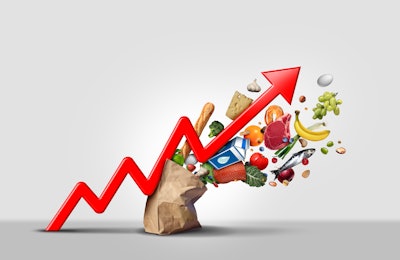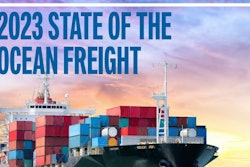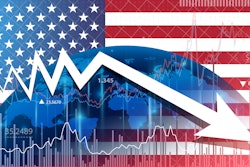
The New Normal… a phrase created shortly after the pandemic to signify the new way of doing business.
But for many supply chains, that “new” way of doing business changes constantly, forcing decision-makers to continuously pivot.
In Food Logistics’ Nov/Dec 2022 issue, editor-in-chief Marina Mayer talks with industry experts about what the return to normalcy in the supply chain space looks like and what’s in store for global cold chains come 2023.
Here’s an interview with Troy Prothero, SVP, product management, supply chain solutions, SymphonyAI Retail CPG, who details how changes in purchasing and consumption patterns to inflation and geopolitical events continue to create a perfect storm for supply chain disruption, with excerpts publishing in Food Logistics’ Nov/Dec 2022 issue. [CLICK HERE to read the article in full].
Food Logistics: 2022 saw a lot of instability within the supply chain. Port strikes, rail strikes, driver shortage and more. Industry experts even predict it may take supply chains close to 2-3 years to turn around. From your vantage point, what does the state of the supply chain look like next year and the years ahead?
Troy Prothero: As we approach the end of 2022 and enter 2023, I anticipate a state of continued supply chain instability and disruptions for the next year, if not longer. Consequently, issues of accuracy in demand forecasting will continue to be a major pain point for retailers.
From changes in purchasing and consumption patterns that resulted from the past two years to inflation and geopolitical events, all of these factors combined create a perfect storm for supply chain disruption. What’s more, retailers can no longer rely solely on historical demand data as a basis for forecasting.
As a result, retailers must look to their demand forecasting technologies and ensure predictions are as agile, data-driven, science-based and accurate as possible. In addition, it’s crucial to proactively look at scenarios that might occur and plan how to act ahead of time, rather than just react to them.
Food Logistics: What are some of the main trends or challenges set to disrupt supply chains in 2023 (be specific)?
Prothero: As mentioned, the supply chain has been disrupted from start to finish over the past three years and this will continue into 2023. For example, manufacturing will face new trials as energy inputs grow more expensive amidst current geopolitical events. In addition, fulfillment methods must be more agile as shopper behaviors continue to shift and inflation continues to impact shopper purchasing decisions. Retailers must be ready for unexpected changes in current demand and consumption – not just what historical data might otherwise indicate.
Food Logistics: The cold food chain continues to face a host of risk/security challenges. What can companies be doing now to adapt for the future?
Prothero: While risks in the cold food chain can’t always be avoided, accurate demand forecasting and demand planning is really the foundation to minimizing them. Raw materials sourcing has become unstable, with problems that stem back to events of 2020. However, by understanding these effects alongside consumer demand, retailers can be better prepared to handle any challenges.
Food Logistics: The labor shortage is a real thing, and it’s impacting several facets of the supply chain. What is your company – or what should companies – be doing to hire, onboard and retain good quality supply chain workers?
Prothero: As a software provider, SymphonyAI Retail CPG’s role is to equip retailers with the tools that enable them to be as efficient and agile as possible throughout the supply chain, even if they may have limited resources, including labor. The right supply chain technology should drive efficiency by amplifying the resources a retailer does have.
With regard to labor efficiency, technology can automate processes and allow current teams within the supply chain to do more with what they have, ultimately providing more value.
Food Logistics: Sustainability continues to be a core part of many companies’ supply chain strategies. What’s most important in achieving that ultimate sustainability footprint?
Prothero: End-to-end supply chain visibility and tracking plays an important role in the transparency that’s needed for ESG (environment, social and governance) reporting metrics. What’s more, with a unified view of inventory visibility and traceability, and increased agility to reduce excess inventory, retailers can minimize waste and spoilage, which is a significant source of landfill bulk and greenhouse gases. As shopper expectations for fresh and prepared foods continue to grow, retailers can track inventory with details including use-by date data to anticipate and mitigate waste by more aggressively pricing and promoting items nearing that horizon and optimizing inventory plans to avoid future waste related to use-by dates.
Food Logistics: The influx of e-commerce put supply chains in the spotlight to pivot or fall behind. What can companies do to re-tool their warehousing and transportation tactics?
Prothero: Every success in the supply chain starts with delivering an accurate demand forecast. Before focusing on warehousing and transportation, retailers must look to improve this within the e-commerce channel, as well as evaluate it as its own separate channel. In addition, customers expect the best service possible, whether their fulfillment method is in-store pickup or delivery. Pivoting toward micro-fulfillment centers, whether in-store or standalone, is one way retailers can fulfill orders closer to the end customer.
Food Logistics: What are some things not addressed above that may be pertinent to our readers?
Prothero: The past couple of years have called into question the fundamental paradigm in which supply chains have operated for the past 20-30 years: the “just-in-time” fulfillment philosophy. This practice only operates successfully under the assumption that each piece of the supply chain will work efficiently. And, as we have found in the past two years, this idea can be thrown out the window. Now, the key challenge retailers face is understanding the new balance they must find between ensuring they don’t have an overstock of products and that items aren’t missing on the shelf. This is where building more resiliency across the supply chain is crucial.
[CLICK HERE to read the article in full].


















